
Bluefin vs Yellowfin Tuna Main Differences Ocean Info
Size makes a difference in the aquatic universe, and one tuna seriously outweighs all others. Bluefin tuna can weigh in at up to 1500 pounds and range from six to 10 feet long, per the World.
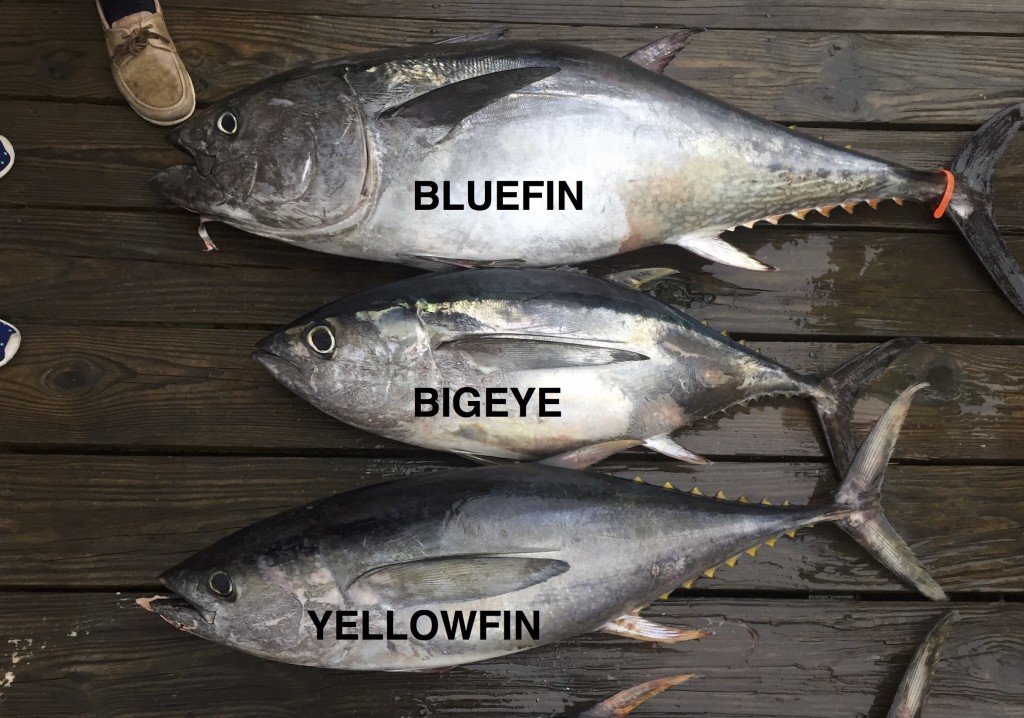
Yellowfins and Bluefins and Bigeyes Oh My Ocean City MD Fishing
Bluefin vs Yellowfin Tuna Cost. Bluefin Tuna is perhaps the most sought-after commercial fish worldwide. This is one of reasons that Bluefin Tuna is a very expensive fish. A 600-pound specimen sold for $3 million in a Japanese auction. It is primarily consumed in sashimi by Japan. The average price for Atlantic bluefin is around $200 per pound.

Bluefin vs Yellowfin Tuna Main Differences Ocean Info
Bluefin vs Yellowfin Tuna: Culinary price point. Bluefin tuna is among the most expensive fish in the world. ©funny face/Shutterstock.com. The bluefin tuna may be the most sought-after commercial fish in the world. It is an extremely expensive fish, with the current record being a 600-lbs bluefin selling for $3 million at a Japanese auction.

Bluefin vs. Yellowfin Tuna Looks, Taste, and More (Updated 2023)
The key differences between bluefin and yellowfin tuna include: 1) Size - Bluefin tuna can reach sizes of over 1,000 lbs. while yellowfin tuna rarely reach over 500 lbs; 2) Color - Yellowfin Tuna have a distinct yellow lateral line from their head to their tail above the pectoral fins. Also the second pectoral fin on yellowfin tuna are elongated and bright yellow while those on bluefin tuna.

Yellowfin tuna vs Bluefin tuna Quick Guide Tom's Catch Blog
Yellowfin Tuna. Yellowfin tuna is found worldwide in tropical and subtropical waters, and is common throughout the Atlantic, Pacific, and Indian Oceans. It is a pelagic fish, and is among the larger of the many types of tuna. It is smaller than a bluefin and bigeye yet generally larger than a blackfin, skipjack, or albacore.

The four main tuna species in the tropical and subtropical waters of
On the outside, bluefin tuna are metallic blue and silver and have yellow-green fins. Compared to different kinds of tuna, bluefin tuna are a bit squat and have subtle white striations. They are most commonly confused with yellowfin, but the main difference is that bluefins have a blue-green lateral line running down the sides of their body.
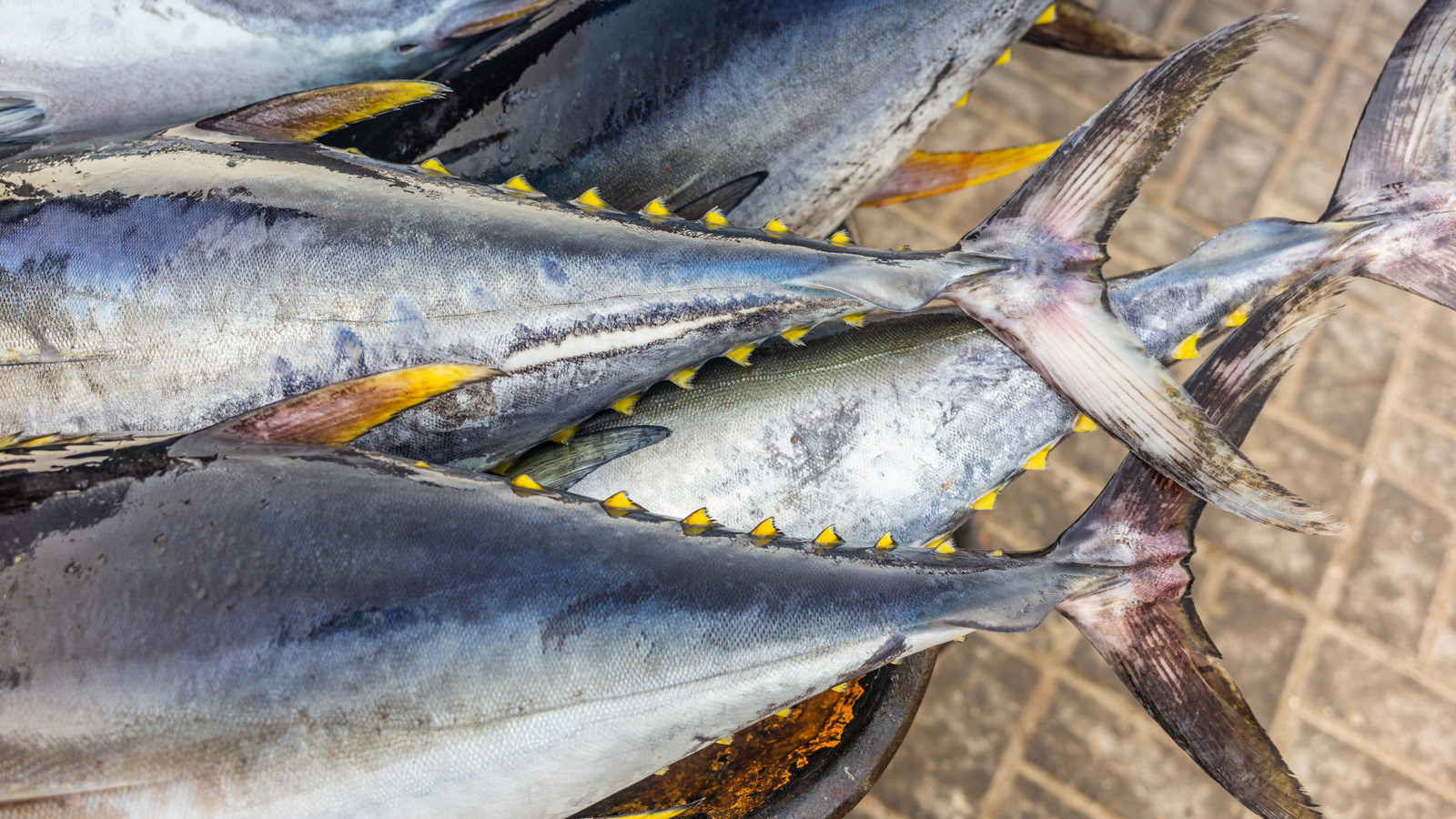
Bluefin Vs. Yellowfin Tuna What's The Difference?
Both bluefin and yellowfin tuna are prized for their meat, but they have different characteristics that make them unique.. Another difference between bluefin and yellowfin tuna is their habitat. Bluefin tuna is found in the Atlantic and Pacific oceans, while yellowfin tuna is found in tropical and subtropical waters around the world.. Bluefin tuna prefers colder water and can be found in.

Bluefin vs. Yellowfin Tuna Looks, Taste, and More (Updated 2023)
Bluefin vs. Yellowfin Tuna: Taste. The most expensive and exquisite fish on the market is the bluefin tuna. They've grown in popularity among high-end dining establishments due to their excellent fatty flesh. A Japanese restaurant chain recently acquired a single bluefin tuna for $3 million! Bluefin tuna is now increasingly available in.

Identifying Bluefin vs. Yellowfin Tuna theLAB.earth
Colour. As the name suggests, the Yellowfin Tuna has a clear yellow lateral line above its pectoral fin and a bright yellow second dorsal fin. The Bluefin Tuna, however, has a second dorsal fin that is a mixture of grey and yellow and an underside that is silver, with uneven lines.
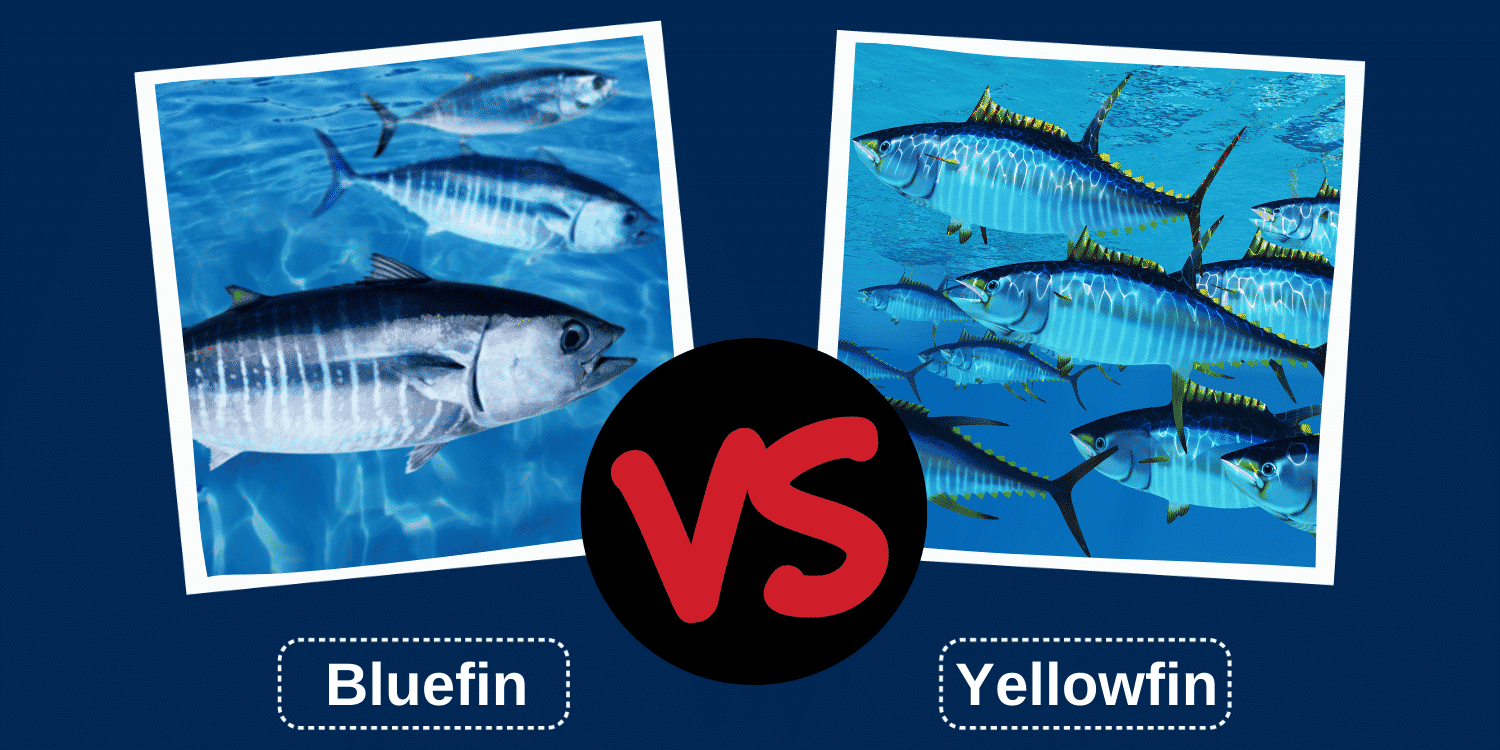
Bluefin Tuna vs Yellowfin Tuna
Bluefin and yellowfin tuna are caught throughout the Atlantic, Pacific, and Indian Oceans, and while both types of fish are prized for their meat, the two species differ in color, size, habitat.

Yellowfin tuna vs Bluefin tuna Quick Guide Tom's Catch Blog
It is smaller than bluefin tuna, with most individuals growing up to 6 feet long and weighing up to 400 pounds. Yellowfin tuna is less expensive than bluefin tuna and is more widely available. Health Benefits of Yellowfin Tuna. Like bluefin tuna, yellowfin tuna is a good source of omega-3 fatty acids, protein, vitamin B12, and vitamin D.

Yellowfin tuna vs Bluefin tuna Quick Guide Tom's Catch Blog
Related: Fluke Vs Flounder: Understanding The Differences And Similarities. Yellowfin tuna have a relatively large head compared to their body size, with a pointed snout and a mouth filled with sharp teeth. Their eyes are large and provide excellent vision, helping them spot prey and navigate through the depths of the ocean. Bluefin Tuna Appearance

Bluefin vs Yellowfin Tuna What are the Differences? AZ Animals
In the US, Yellowfin is a popular sushi option for a couple of reasons. One, it doesn't come with the premium price tag of Bluefin Tuna, but still offers plenty of value for the money. Two, its meat is a lot leaner and milder tasting than Bluefin and Bigeye, whose fat content contributes to a much more pronounced taste.

Yellowfin tuna vs Bluefin tuna Quick Guide Tom's Catch Blog
Bluefin vs yellowfin tuna look, in many ways, virtually identical to one another. However, their habitat, feeding patterns and certain appearance characteristics are often what makes them quite different from one another. Tuna operations are often among the most profitable types of commercial fishing ventures across the world. These fish grow.
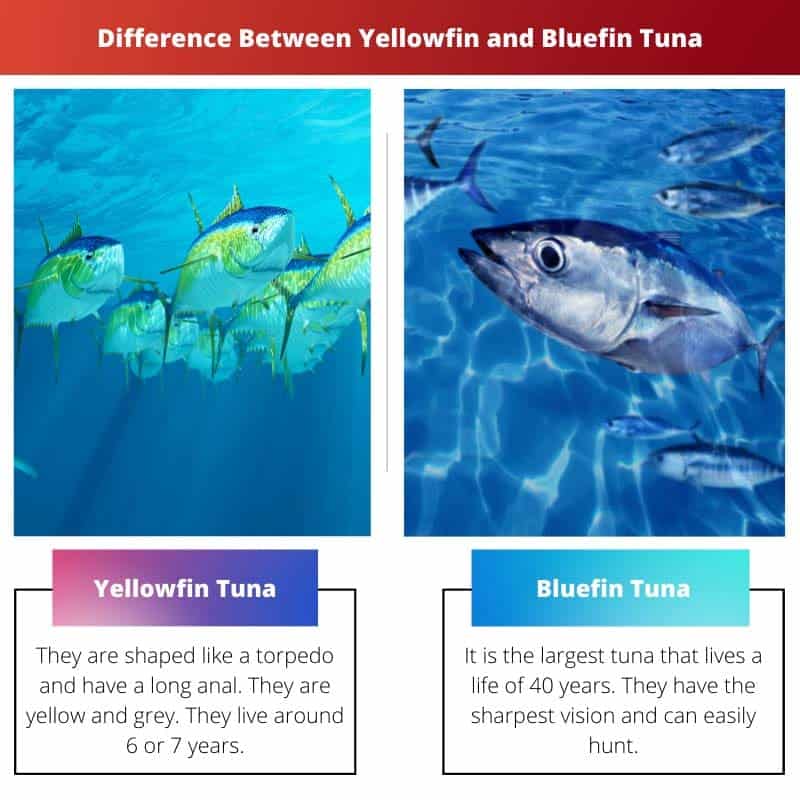
Yellowfin vs Bluefin Tuna Difference and Comparison
4. The tail on a Bluefin is dark blue in color, unlike the yellow-and-gray combination on a Yellowfin. Again, that might be a little difficult to grasp, so let's take a look at what these differences actually look like. Bluefin vs. Yellowfin Tuna Taste. Bluefin Tuna are the most prestigious and luxurious fish money can buy.
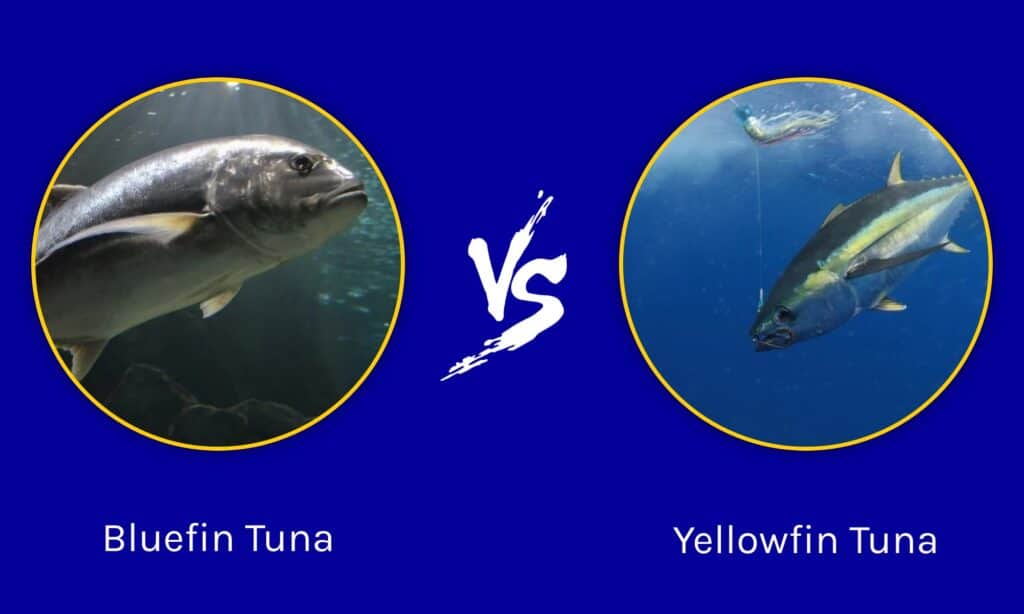
Bluefin vs Yellowfin Tuna What are the Differences? IMP WORLD
The yellowfin also has far more pronounced fins, making them 'sharp' looking. Size: There is a big size difference despite the yellowfin tuna weighing 400 lbs. The bluefin tuna dwarfs it as it can weigh up to 1500 lbs. Habitat: The bluefin tuna is known for inhabiting the Atlantic and Pacific Oceans, while the yellowfin mostly sticks to.